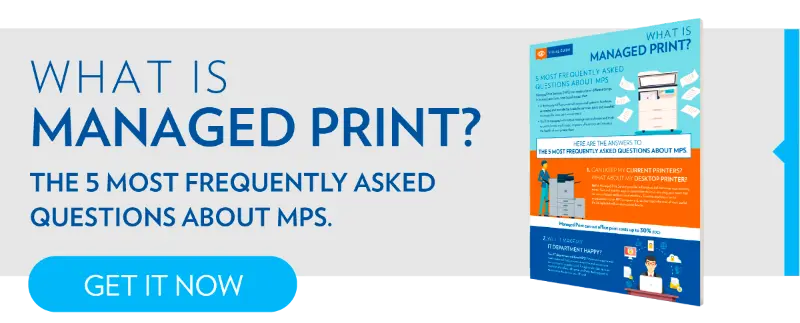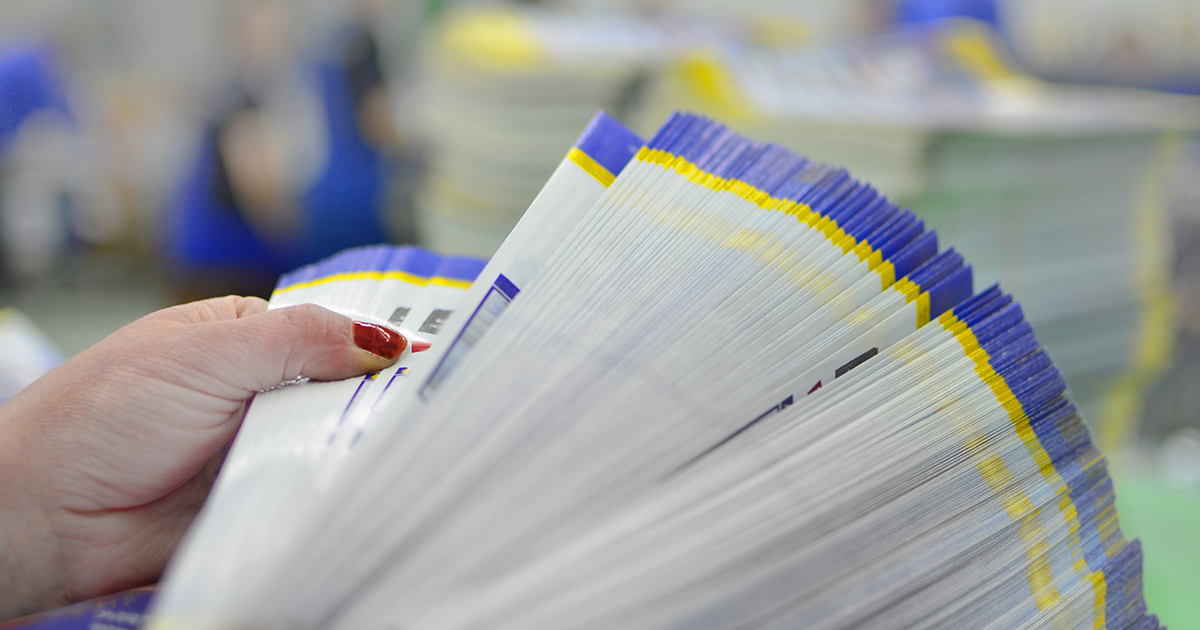We’ve been in the copier and printer business since 1956, so we may sometimes forget not everyone is fluent in printer terminology. But if you’re buying a new copier, printer or multifunction device, don’t let all of the numbers and specifications scare you. In fact, getting the machine you need is easier than you might think.
Today, I will explain modern printer and copier technology and help you make informed decisions about your next office technology purchase. Here are answers to some of the most frequently asked questions about printers, copiers and multifunction machines that you might need to know before making a purchase.
What is an A3 versus A4?
No, we’re not talking about the new Audi sportscar. You may hear people talk about printers as A3 or A4. All that refers to is the maximum paper size you will be able to print, copy or scan. An A4 multi-function printer (MFP) can print on up to 8 ½ x 14” paper, while A3 devices can print up to 11x17” paper.
The bottom line is that if your office produces mainly documents on letter and legal-sized paper, an A4 MFP might be what you need. But if you regularly use larger-sized paper for engineering documents, making booklets, menus and design layouts, larger paper will be needed. For these more complicated tasks, you will also need to consider not only paper size, but whether your MFP can fold, staple, saddle stitch, punch holes or print in color.
What is the Difference Between an Inkjet and Laser Printer?
Inkjet Printers drop ink through jets or small nozzles on the surface of the paper. Laser printers use a combination of heat and toner dust to make prints. This powder gets attached to the paper and can produce high-resolution prints. Laser printers are generally more expensive to buy but can produce more prints and work faster than an inkjet. Inkjets also go through ink much faster than a laser printer uses up toner. Inkjet technology is becoming increasingly faster with longer-lasting ink cartridges, but may require special paper to avoid curling as the ink wets the paper.
What Do All Those Model Numbers Mean?
The first thing you might notice when researching printers is that they all have a random-seeming string of numbers for a name. Usually, the manufacturer numbers indicate the speed, or number of pages per minute the machine can reliably produce. For example, in the Canon C5760, the letter C indicates color capability for a machine that can produce 60 pages per minute while the Lexmark XM3250 prints 50 pages per minute.
Do I Need Auto-duplexing?
A good way to budget is with two-sided printing often called duplexing. This is a two-sided printing feature which automatically reloads a printed paper into the machine, turning it over and printing the second side of the document on the back of the page. Not only is this more efficient, but it also results in more professional-looking documents.
What Do Feeders Do?
If you have piles of documents to copy, an automatic feeding mechanism can be a life saver. Instead of having to load each document individually, feeding documents means you can just load one pile of 50 up to 300 sheets and the copier will run through them automatically.
Most modern copiers will also have a sorting feature that sorts copies into their original order, so you don’t need to fumble around trying to get your presentation in order. Many copiers will also staple your documents together automatically. There are even staplers that can crimp the pages to hold 5 pages together at one time, making complicated jobs painless to produce.
What is Letter Sized? What Other Sizes Do I Need?
If you need to produce documents of different sizes, it’s important that your printer and copier have the capacity to enlarge and reduce the size of documents. Outside of the standard 8.5" x 11" document size, (letter sized) many new copiers are equipped to handle papers sizes like 11X17 or 11X48 banners. Before buying a new machine, look at the size of the documents you produce and make sure you need larger paper sizes before paying for larger output capabilities.
Do I Want a Printer or a Managed Print Service?
Many people forget that when buying new printers or copiers, there is an additional cost for supplies, maintenance and service for the machine. In fact, the supplies are the most expensive part of owning a printer. If something goes wrong, who will troubleshoot or fix it? For a small organization, it might not be a huge burden, but if you have many machines to support, a Managed Print Service (MPS) can deliver the newest technology serviced and supported by experienced technicians.
If you have a good MPS partner, your machines will be actively maintained and supported with preventative maintenance, and in some cases, it can help eliminate, consolidate and redeploy underutilized devices. In many cases, it means your IT department won’t need to worry about supporting printers at all, and can focus on more important tasks, like adding new technology.
The most important thing to consider when buying a new print device is what you need it for. As you can see above, printers and multifunction devices can print brilliant images and even collate and staple it all for you. But you should never pay for technology you don’t need. If you want to talk about the right machine and printer technology for your office, contact the print experts at GFC.










